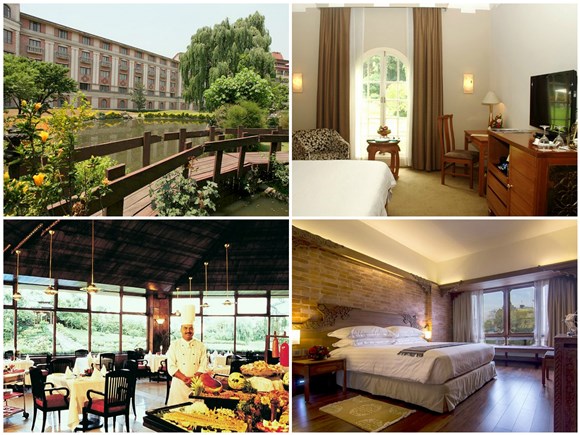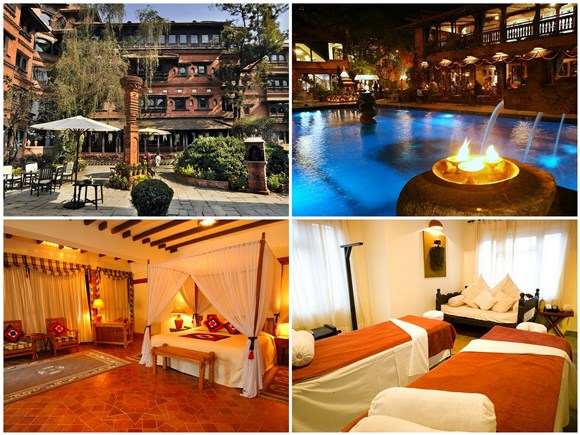Ultimate Everest - The #1 Guide Service to Everest Base Camp
What is the Weather in Nepal?
Nepal offers a wide range of climates varying from tropical to arctic depending on the topography and altitude. The region offers four climatic seasons, but no matter what time of year you visit Nepal, be prepared for potential volatile conditions when on a mountain trek. The lowland plains experience tropical temperatures. Weather at higher elevations are unpredictable. In the Himalayas, temperatures are typically cold, though the sun does bring some warmth in the day.
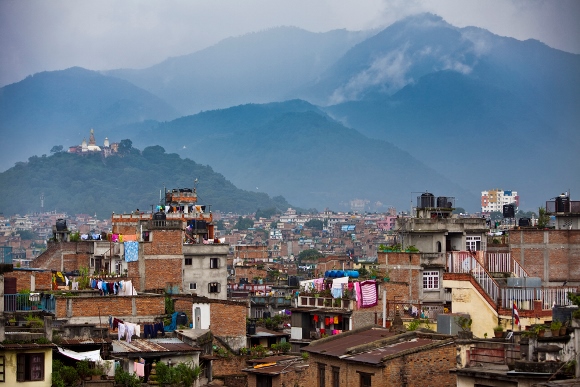
Kathmandu, the gateway town from which our climbs are organized, sits at 4,593 feet (1,400 m) above sea level. The bowl shaped Kathmandu Valley of central Nepal is surrounded by four major mountains: Shivapuri, Phulchoki, Nagarjun, and Chandragiri. Kathmandu is generally warm during the day, followed by cool nights and mornings. Average temperatures, humidity and precipitation figures for Kathmandu are reflected in the following table.
Average Temperature, Humidity and Precipitation in Kathmandu, Nepal |
|||||
|
Month
|
Low (F)
|
Average (F)
|
High (F)
|
Humidity (%) |
Rainfall (in)
|
| January | 40 | 50 | 60 | 81 | 0.7 |
| February | 44 | 54 | 63 | 77 | 0.6 |
| March | 50 | 60 | 70 | 72 | 1.2 |
| April | 57 | 67 | 77 | 69 | 1.5 |
| May | 63 | 71 | 79 | 75 | 4.0 |
| June | 69 | 75 | 80 | 82 | 7.9 |
| July | 70 | 75 | 79 | 88 | 14.8 |
| August | 70 | 75 | 79 | 87 | 12.8 |
| September | 67 | 72 | 78 | 88 | 7.4 |
| October | 59 | 67 | 74 | 85 | 2.2 |
| November | 49 | 59 | 68 | 84 | 0.1 |
| December | 42 | 52 | 61 | 83 | 0.4 |
As shown, July and August are the wettest and warmest months, December, January and February are the coolest months, and November and December are the driest months. These generalities about the weather in Kathmandu hold true for the Annapurna and Everest regions as well.
What Gear Do I Need to Carry in my Day Pack?
Your day pack will consist of items from your gear list that you may need to access along the trek. A small to medium sized backpack, with a volume capacity of up to 2000 cu in (30 liters), is appropriate. Typical items inside your daypack: water, camera, sun-screen, extra clothing, snacks, hat, and sunglasses. Consult your guide if you are unsure of what you need.
.jpg)
Everything else should be placed into your duffel bag, which the porters will carry. The weight limit of the duffel bag is 31 lbs (14 kgs). The porters will carry the duffel bag from point to point. Use plastic bags or dry bags to separate and water proof your gear. You will be expected to pack your daypack and duffel bag each morning. Note that it is acceptable to use a backpack instead of a duffel bag. However, since porters bundle the bag with other items, a duffel bag is preferred.
What is the Daily Trekking Schedule?
Each morning, after packing your bags and eating breakfast, the day's trek will begin. We usually hike 3-4 hours and stop for lunch around midday. It’s then a shorter afternoon trek before reaching the day’s destination in time for afternoon tea. The rest of the day is free for exploring the village or relaxing. On some days the destination will be reached by lunchtime, so you have the afternoon free. Evenings are typically spent by having dinner and sociallizing in the common area.
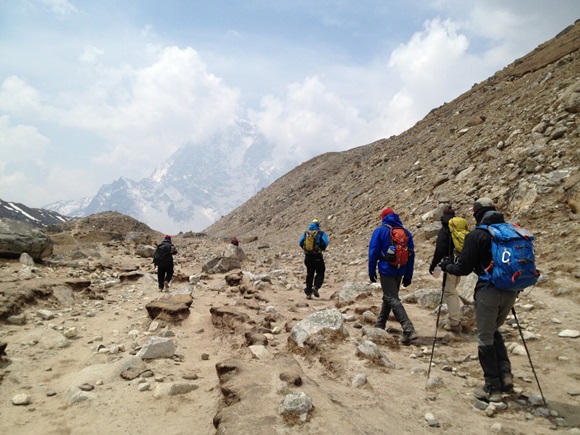
We do not pressure or rush any of our trekkers to maintain a strict schedule. However, we do strive to be one of the first groups on the trail each morning, getting a head start on the day's trek. This allows us to be ahead of the crowds rather amongst or behind them, particularly during the high season. Over breakfast the guides will review the plan for the day and check if any one has any concerns or issues.
Where Will I Sleep?
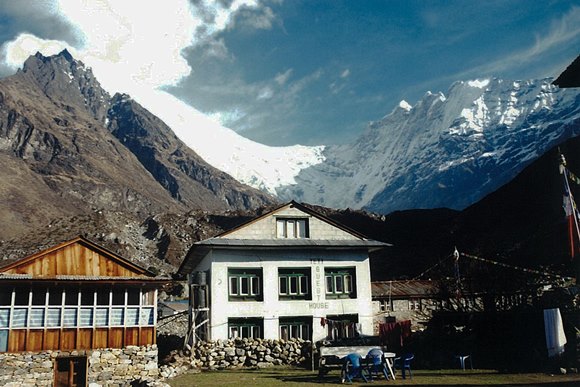
We have a list of approved lodges which we use. All have been inspected to meet our standards and ensure a clean environment. On the trail accommodations cannot be booked in advance so during busy season we send a porter ahead to secure enough rooms for the group.
The lodges are generally laid out in the same way. There is a common room where guests can sit down and relax, dine and hang out. A yak dung oven in the middle of the room is used to keep guests warm at night.
The further you get from Lukla the more basic the room accommodations will be. The rooms generally consisting of two wooden bench beds with thin mattresses, blankets, and pillows. Having your own 4 season sleeping bag and comfortable sleeping mat is essential on any trek. There is no heat in the rooms and the temperatures can be below freezing overnight.
Bathroom facilities range from flushable en suite toilets, to flushable shared toilets, to indoor pit toilets, to outdoor pit toilets. Toilet paper is available for purchase throughout the treks. Hot showers are not always available and most trekkers do not use them as the temperature inside these bathrooms can be quite cold.
Some lodges in will offer laundry, battery recharging, warm water bowls, and wifi for a fee. Bills are settled before leaving the lodge.
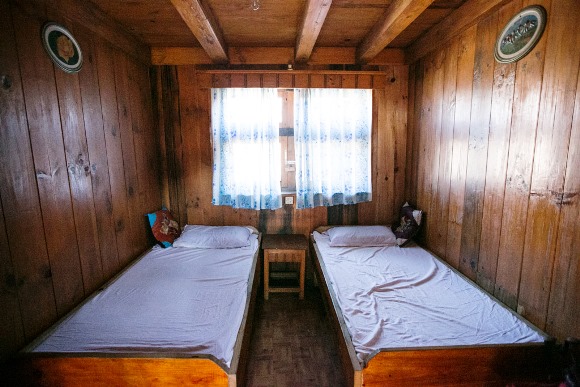
If you are climbing Island Peak or Mera Peak, there will be a couple of days in the itinerary when you camp. On these days we will provide tents, as well as food.
What are the Trail Conditions?
The trails on your trek will vary but typically they are well marked and maintained. Along the way you will encounter local people, donkeys and yaks as the animals are using to carry supplies to and from their village. In the busy season, many other trekkers will be on the trail. The trails can be very dusty, and it is a good idea to have a mask, Buff or bandana to cover your nose and mouth.
Technical skills are not required unless you are climbing a peak. However, trekkers should be prepared to walk on dirt, loose gravel, rocks, snow and even ice. Depending on the trek you choose, there will be some steep climbs and descents on loose rock. Also there may be some sections where you will need to scramble (on hands and feet). There will mountain traverses, and multiple river crossings over wooden bridges or steel suspension bridges that sway high above the valley. There are also sections of the trail where you will trek through moraine, which is mass of rocks and sediment carried down by a glacier.
Sections of the Manaslu Circuit are carved into the mountainside with steep, exposed drop-offs and the Island Peak is a strenuous trek that requires you to use crampons and a harness in order to cross the Imja glacier, an amazing experience.
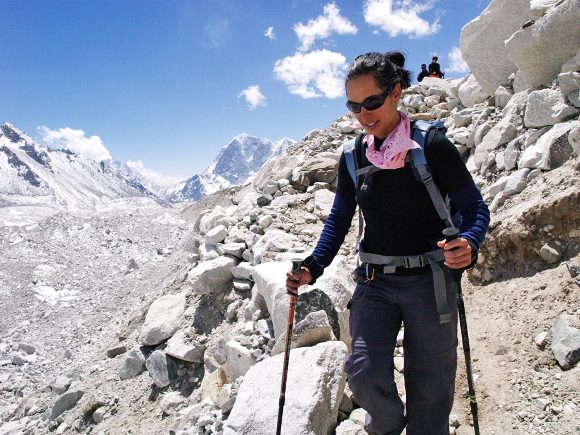
What Food and Water Will be Provided?
High altitude treks are taxing on the body, therefore it is important to stay hydrated and eat well. Our guides will fill your water bottles with micro-filtered water each day and will refill them as needed. We select quality lodges for our treks. Tthey are slightly more expensive but they offer a larger selection of foods cooked fresh in the lodge kitchens.
Meals are included in our treks, which allows you to try different dishes and makes it easy to tailor to specific dietary needs, such as vegetarian or vegan diets. Food choices, pictured below, include basic Dahl Baht (lentils and rice), Masu (meat with curry), Momos (dumplings with meat or vegetables), Yak steak (additional charge), Pulao (fried rice) and much more. There are also Western dishes such as sandwiches, spaghetti, pizza, and french fries.
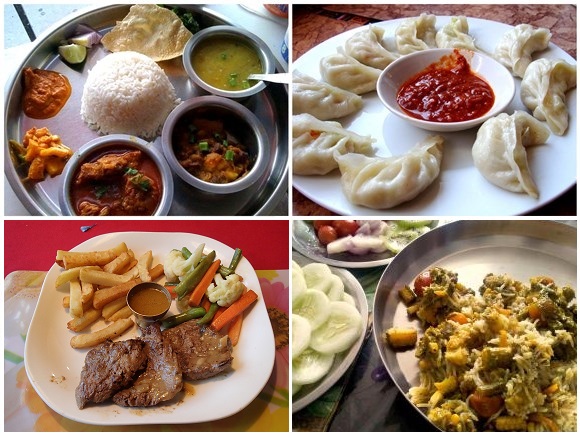
Once you arrive the lodge it is best to order your meal as soon as possible. The system is a first order, first serve basis and can get very busy. Each morning you will be responsible for settling your bill before the day's trek.
An array of hot beverages (tea, coffee, hot chocolate) and cold beverages (soda, beer, juice) and an assortment of snacks (cookies, chocolate, potato chips) are also available. Food costs will depend on what you order but we recommend that you budget between $25 and $30 per day for your meals and drinks which will give you a good range of options.
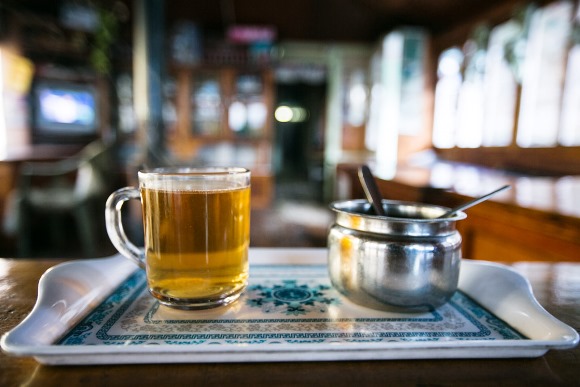
What are the Accommodations in Kathmandu?
Our guests will stay at the International Guest House in Kathmandu before and after the trek. International Guest House was founded in 1980 as a small family business, but has grown to establish itself as one of Kathmandu's leading hotels. The lodge is decorated with Tibetan and traditional Nepalese cultural art and architecture, including wood-carved windows dating back over a century. The guest ouse is located in a quiet residential location just a minute's walk from Thamel, a popular tourist market with many options for food and entertainment.
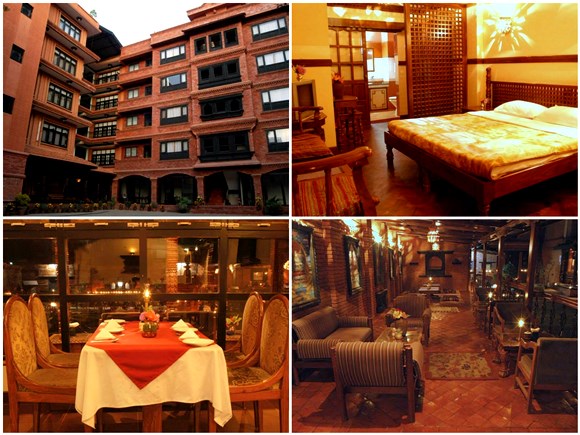
We offer the following upgraded hotels in Kathmandu:
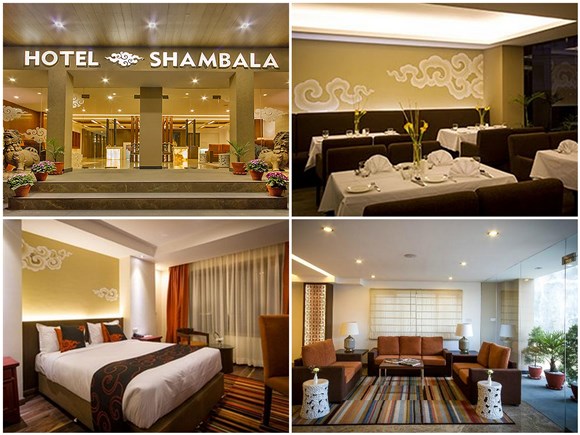
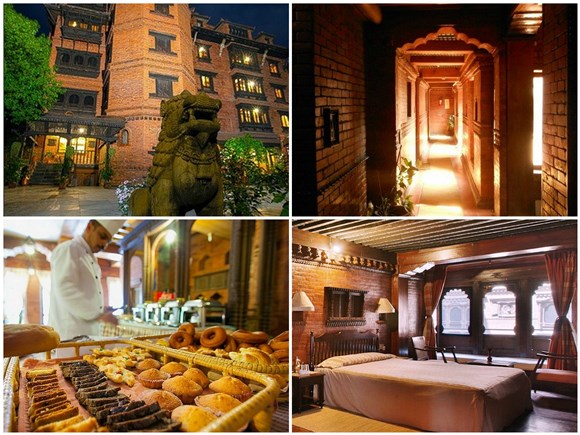
Enjoy daily yoga at the boutique Kantipur Temple House. This hotel offers a truly unique experience and is one of the finest eco-hotels in Kathmandu; authentic Nepalese architecture throughout, decor, food and warm hospitality. The Kantipur Temple House is environmentally friendly and socially responsible without sacrificing comfort, with rooms ranging from standard to super-deluxe. Trip Advisor has given the hotel a Certificate of Excellence for 2014, rated by previous visitors.
These upgraded accommodations are available for an additional cost:
